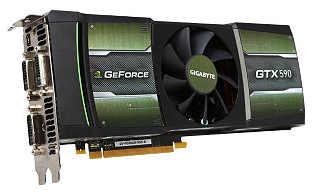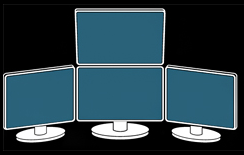Custom-Built Computers
A how to Guide
Graphics Card Selection
Site Navigation
| Reading Room Start Here | ||
| CPU Processors | Motherboard | Graphics Card |
| Memory | Sound Card | Case and CPU Coolers |
| Power Supply | Hard Drive/SSD | |
| Other Advise |
The Graphics Card
Transforms data into visual information !
Some Motherboards offer graphics "built in". This is fine for general business use, however if additional graphic capability is needed, speed for gaming or photography work for example, a high end graphics card is needed.

Graphic Cards come in 2 Chip Sets
NVIDIA and ATI
Interface and Compatibility
The graphics card connects with he Motherboard and provides the signals to the monitor. They connect to the monitor via the following type of connections.
Mini Display Port, DVI, HDMI and VGA.

The type and style of the graphics card is determined through its specifications. Read the graphic card specifications and Motherboard manual.
![]()
The following is a list of SOME of the attributes the graphics card provides.
Number of and types of monitors: Be sure that your connection needs are met on your selected graphics card.

Physical Size: Graphics Cards can be large and contain their own fans so they are sometimes very thick. The very size of these cards can block other accessory slots on the Motherboard and you may have trouble fitting in the case. Be sure to have ample room for them.
Memory: The amount of memory needed depends on the type of software you are going to use. For gaming, look on the software box for graphics memory requirements. Always get more memory then you need.
Bits Needed? The amount of bits needed represents the speed which information travels from the Motherboard to the video processor. Bits range from 64 to 512 bits.
Read the Graphics Card Specifications.
And always Read the Reviews and Customer Q&A on the product you select. Knowledge is Power!
![]()
Here are 2 articles that should help Video Graphics Card Selection.
This is a Graphics Card Buying Guide by Amazon
